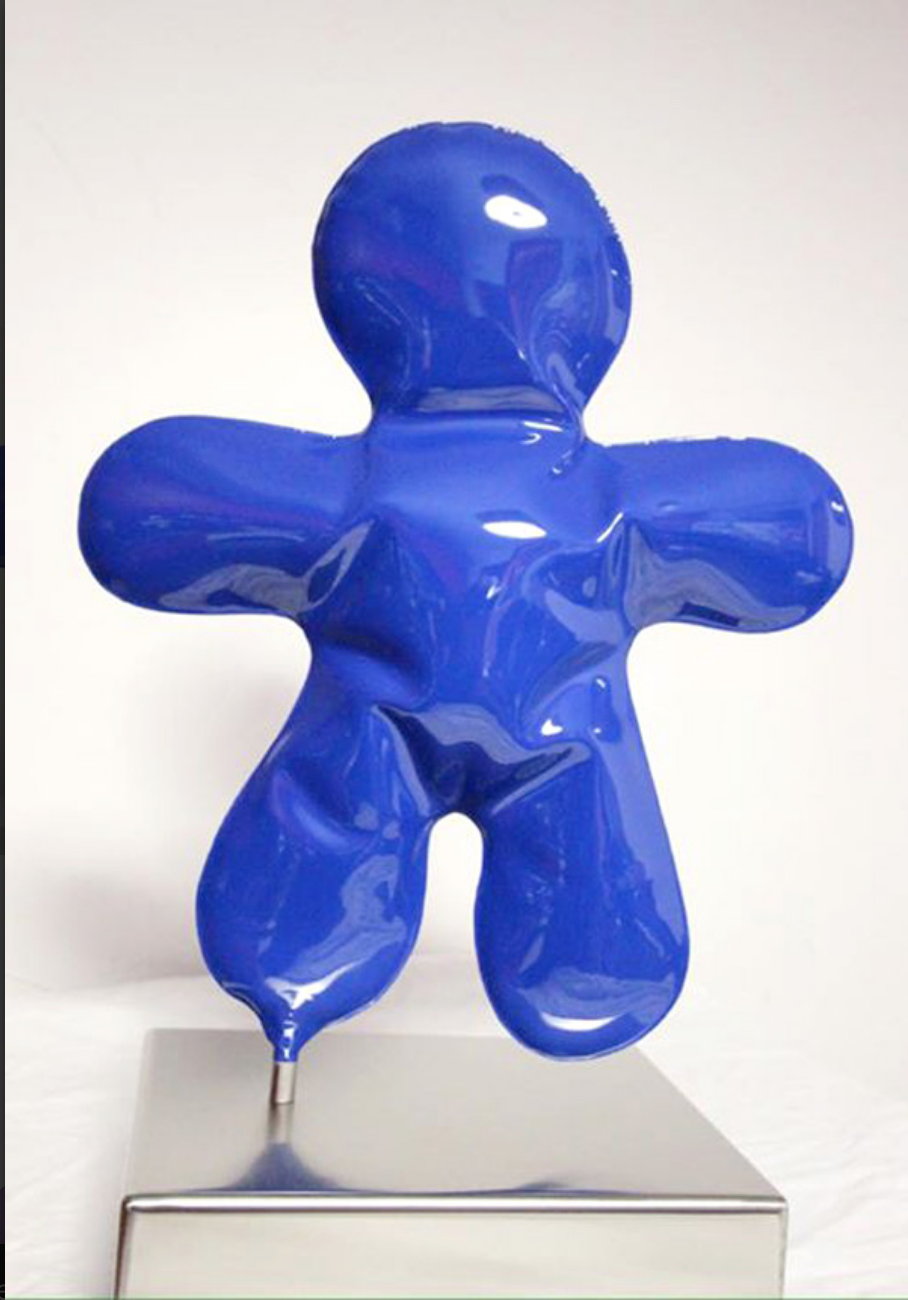Henri Iglesis
Artist Henri Iglesis’s sculptures radiate with their colorful vivacity. All in duality and contrast, they combine the heaviness of shined metal and the lightness of the air. It’s in 2008, having in mind to create a sculpture bear the likeness of his son, that the idea occurred to the artist to inject air inside a work, a structure created by two sheets of welded metal together, therefore creating this technique that would become his trademark. The process is successful and he continues to work on it, developing it, pushing it further to refine it till it’s ready to be officially registered as well as copyrighting the term “blown sheet metal”.
It’s with this technique that the artist now creates the vast majority of his sculptural work. These sculptures express a light, somewhat fanciful creativity, of which is emerging mischievous humor and his own overflowing imagination. His learning process with sheet metal started from a very young age, then continues in a craft school after which he went on to work in a workshop, practicing and refining his techniques and knowledge, always pushing further. Inspire by his family roots, he began by making various objects with hammered sheet metal. It is only after more than 25 years of professional practice with sheet metal that he will develop his now famous sheet metal technique, so unique and easily recognizable to his own work.
Born in 1964 in Perpignan, France, where is still live and work, Henri Iglesis is an artist with Catalan origins. With a blacksmith grandfather and a turner-adjuster father, it is to nobody surprised that the artist chooses to study to become a sheet metal worker and a welder before turning to sculpture and developing his trademark of blown sheet metal invention. During his childhood, Henri Iglesis spent many hours in his father’s workshop, who was repeating to him, like a mantra “Don’t touch anything, just watch and you will learn”. The artist has, over the year, learned and appropriate his family heritage of metalwork, which makes sense in his Petits Bonshommes that are very representative of him.










